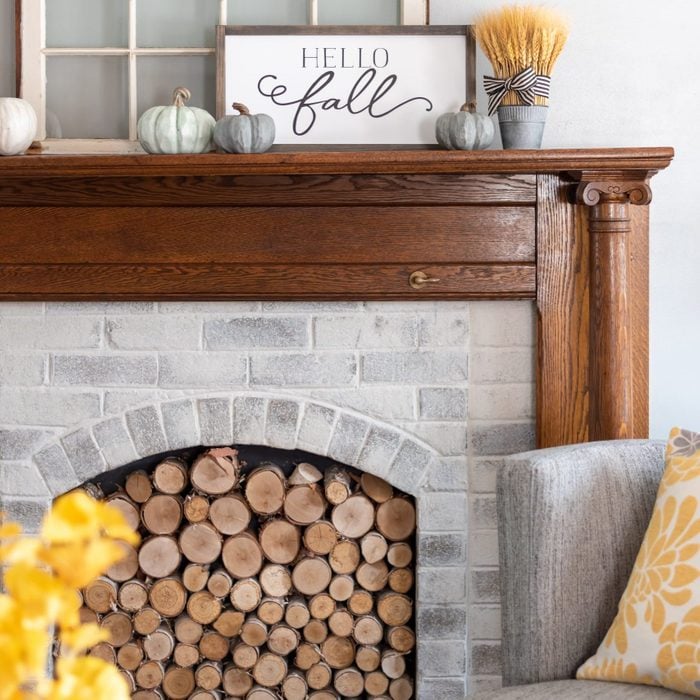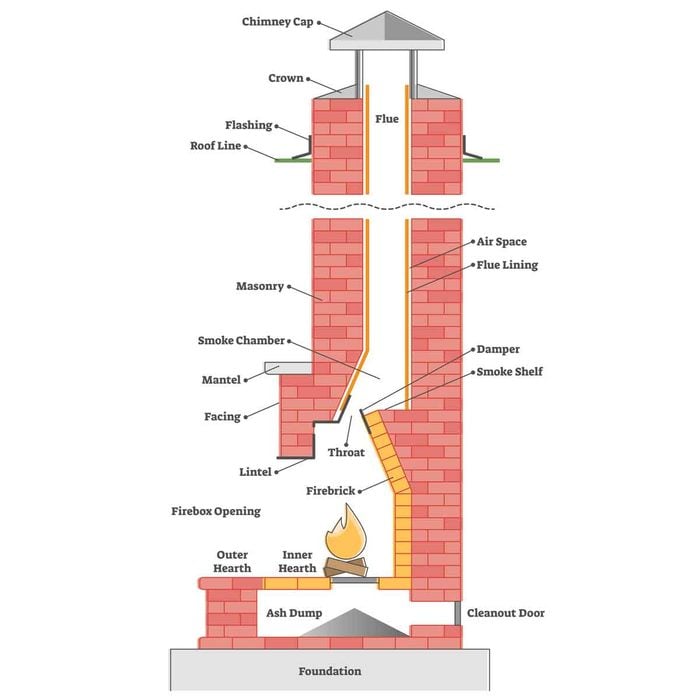 VectorMine/Getty Images
VectorMine/Getty Images
Close Off Fireplaces with a Throat Damper
The first, and perhaps easiest, way to close off a fireplace is with the damper. “If you have a bottom/standard masonry damper you can close it and seal it closed with silicone to stop the airflow,” says Blaken. The damper itself goes a long way toward closing off the fireplace, which is why every wood-burning fireplace needs one. It also prevents rain and animals from coming into your home. With a little silicone, you can make it more airtight. If you change your mind, just remove the silicone.
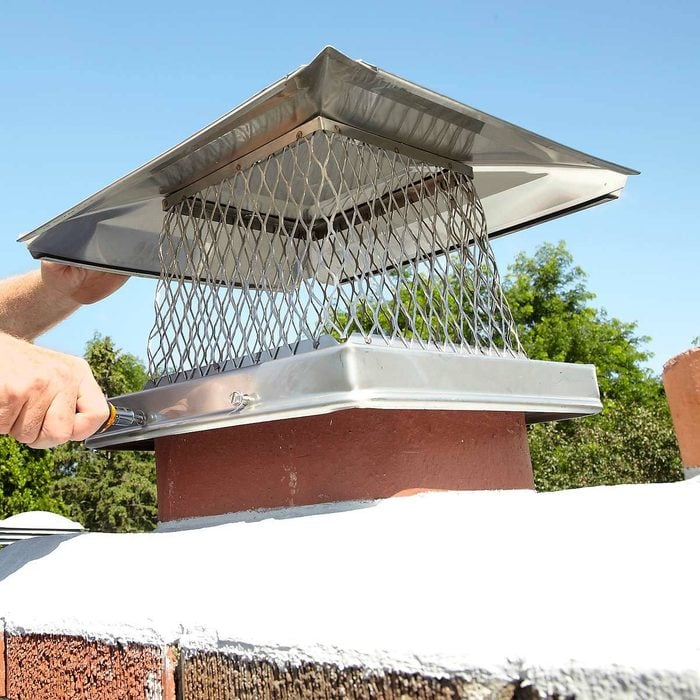 Family Handyman
Family Handyman
Close Off Fireplaces with a Chimney Cap Damper
A chimney cap damper seals a fireplace from the top. This style of damper is very secure; some even come with a rubber seal. “If you have a top closing cap damper, they are more efficient than bottom closing dampers,” explains Blaken. “Those would be the easiest, most temporary solutions.”
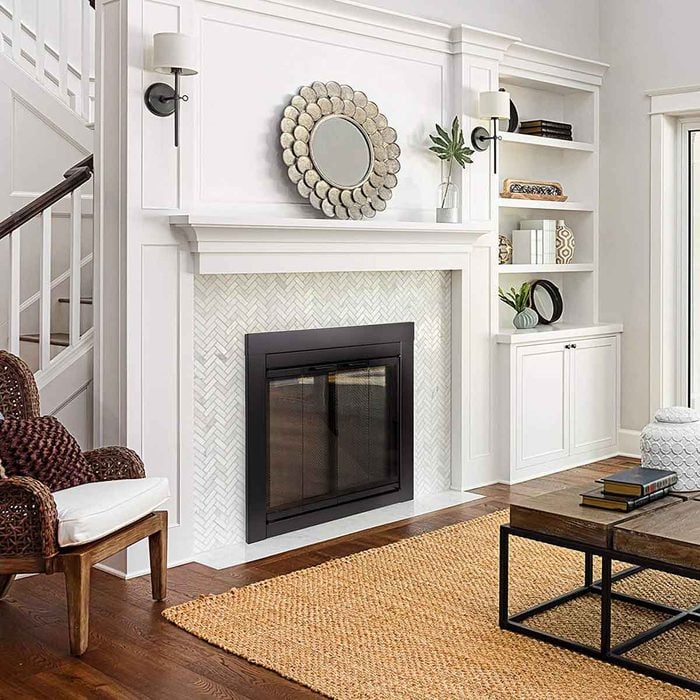 via amazon.com
via amazon.com
Maintain the Look with Fireplace Doors
You can also purchase doors for the fireplace opening. These seal the fireplace while adding to your home décor. Doors can be used in addition to the dampers mentioned above to “maintain the look of the fireplace without the function,” explains Blaken. Glass fireplace doors are a good option for people with curious kids and pets who might try to explore a fireplace left uncovered.
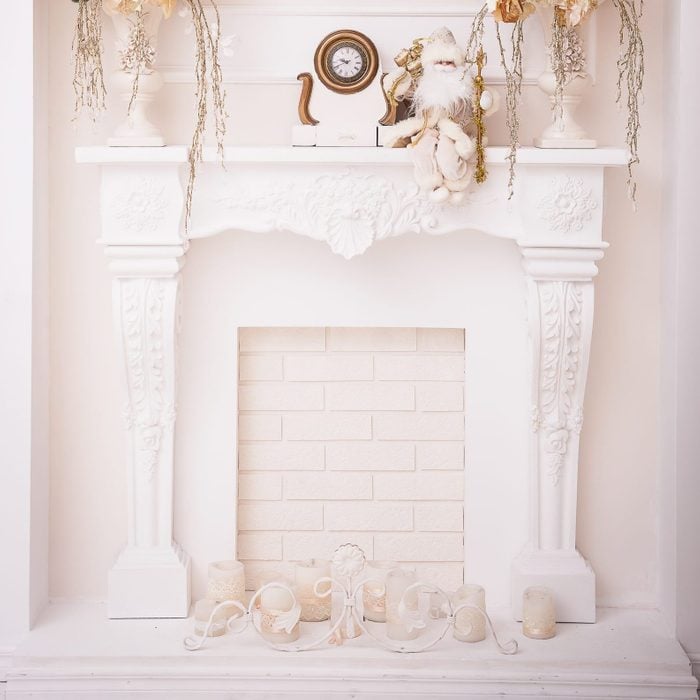 FavoreStudio/Getty Images
FavoreStudio/Getty Images
Seal the Fireplace Opening
There are more permanent options available to close off a fireplace, but they’re also more time consuming. “You can also cover/seal the fireplace opening with brick or drywall if you want to eliminate the fireplace altogether,” says Blaken. You could build a drywall fireplace cover or hire a pro to do it for you. Some drywall fireplace covers act like a plug and can be removed from the opening at will. This DIY fireplace insert is an attractive option. Closing a fireplace with brick is a bigger commitment.
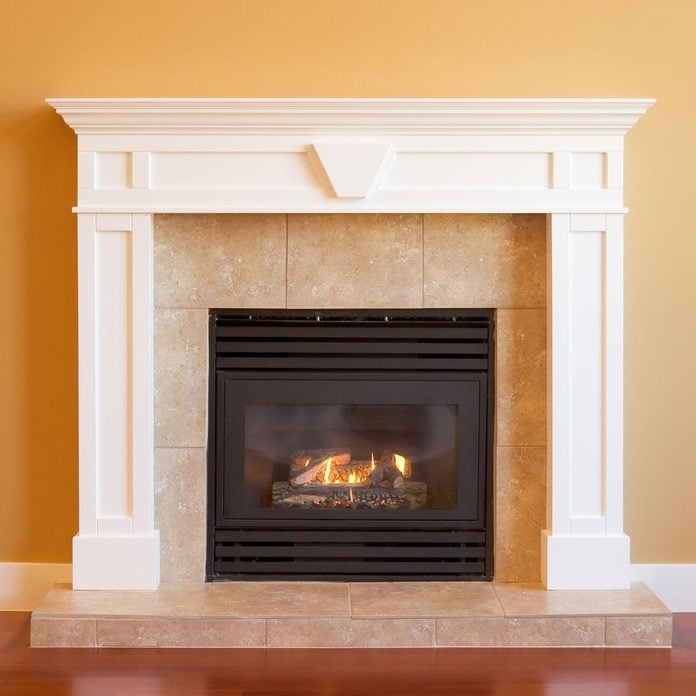 ranplett/Getty Images
ranplett/Getty Images
Fireplace Inserts
A gas fireplace insert is an excellent option for people who are tired of the wood-burning energy vampire. You might also use a gas fireplace more often, since you won’t have to keep firewood on hand and manually build a fire every time the mood strikes. They can be costly and usually require professional installation. However, it might be worth the cost if you’ll use it more often.
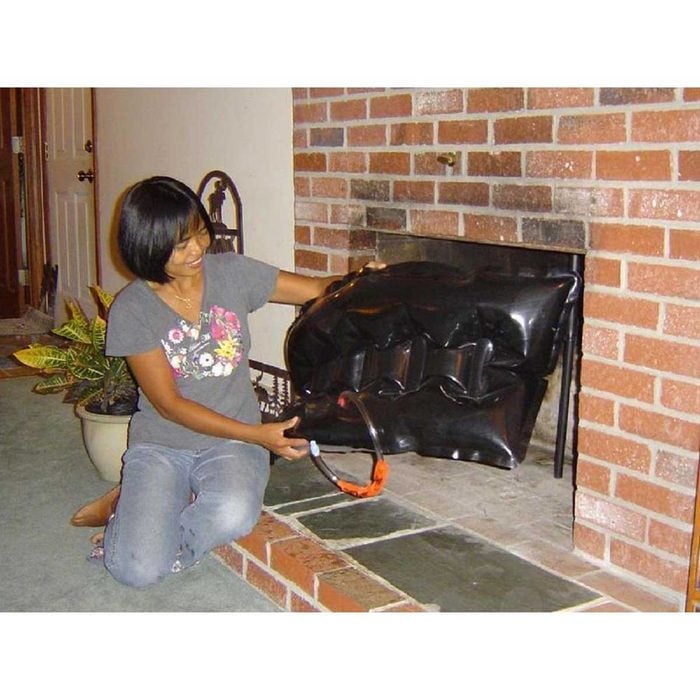 via homedepot.com
via homedepot.com
Seal the Flue
You can purchase products that seal your chimney flue, such as this inflatable fireplace plug. They’re inexpensive and easy to install, and they come in many shapes and sizes to fit your fireplace’s dimensions. These flue sealers are another temporary way to close off a fireplace. You may also see them called draft stoppers. By leaving the opening clear, you can decorate the non-functioning fireplace.
